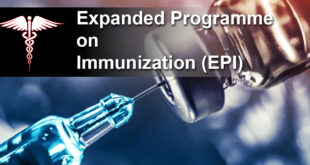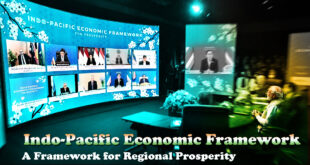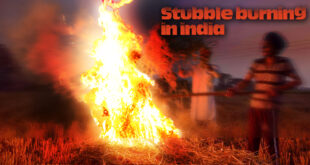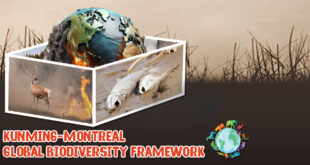Digital platforms and technology have enabled Indian artists and artisans to reach wider audiences.However, they face challenges that are related to economic sustainability, market access, the digital divide, crime in the art world and preservation.
A collaborative model promoting cultural economy can help encourage India’s soft power by creating an ecosystem of innovative technology-based start-ups, providing guidance, technical support, infrastructure, access to investors, and networking opportunities.
Recognising the economic importance of culture, the UNESCO World Conference on Cultural Policies and Sustainable Development (MONDIACULT 2022) was held to address contemporary issues in multicultural societies.

Challenges and status of artists
creating contemporary artworks, they face challenges that are related to economic
sustainability, market access, and the preservation of traditional art forms in a rapidly
changing society.
There are challenges in the selection of artists for financial assistance in organising cultural
events. Lack of transparency in the selection process creates inequality in representation.
There is no systematic or rotational mechanism in place to provide this assistance, and the
selection process is often random or based on subjective criteria.
Crime in the art world includes art theft, copyright infringement, forgery, fraud, and illicit
trafficking. Addressing these crimes requires increased security measures, international
cooperation, public awareness, and advanced technology for authentication and tracking.
These offences affect cultural heritage and cause financial harm and erode public trust.
Exploitation of Indian artists, unaccounted money preserved through artworks, and the
dissemination of disinformation about cultural history through various media only compound
the issue.
Having a collaborative model promoting the cultural economy To promote economic growth.
The needs of artists must be bridged through training, professional development, market access, and participation in larger communities and networks. A facilitation centre would help foster knowledge sharing, economic empowerment, and sustainable livelihood solutions for artists and artisans.
Additionally, existing institutions should address the various needs of artists, such as training, professional development, material support, access to markets, public validation, and participation in larger communities and networks.
Finally, the economic and cultural significance of art, culture, and the creative economy in India, while addressing challenges and proposing solutions, should support the growth and development of artists and artisans as a whole.

The Indian Space Research Organisation (ISRO), which is planning to launch the Chandrayaan-3 moon mission in July, integrated the spacecraft with the Launch Vehicle Mark-III (LVM3) on Wednesday.
“Today, at Satish Dhawan Space Centre, Sriharikota, the encapsulated assembly containing Chandrayaan-3 is mated with LVM3.”
Chandrayaan-3, India’s third moon mission, follows Chandrayaan-2, to demonstrate end- to-end capability in safe landing and roving on the lunar surface. It consists of an indigenous lander module (LM), a propulsion module (PM), and a rover with an objective of developing and demonstrating new technologies required for inter-planetary missions.
The lander has the capability to soft land at a specified lunar site, and deploy the rover, which will carry out in-situ chemical analysis of the lunar surface during the course of its mobility. The lander and the rover have scientific payloads. The main function of the PM is to carry the LM from launch vehicle injection till final lunar 100-km circular polar orbit, and separate the LM from the PM. The PM also has one scientific payload, which will be operated post-separation of the LM.
After its launch in mid-July, the orbital raising will take place. The lander and orbiter will orbit the moon before touching down on the moon.
The ISRO has added more fuel to the lander. Chandrayaan-3 will be going on the same path as its predecessor and will be landing on the same site.

The Union Cabinet on Wednesday cleared the Digital Personal Data Protection (DPDP) Bill.
Along with the data protection Bill, the Union government may also table the Indian Telecommunications Bill, a draft.
The data protection legislation specifies norms on management of personal data of Indian residents and requiresexplicit consent from people whose data is collected and used.
The official said that over 20,000 comments were received on the draft Bill though these would not be put out in the public domain. He said there was not much difference between the draft Bill that was circulated for public consultation and the final Bill, which would be tabled in Parliament. The government has refused to provide copies of comments from industry, civil society, and government bodies on the Bills in response to Right to Information (RTI) queries.
The DPDP Bill also outlines practices for entities that collect personal data on how that data should be stored and processed to ensure there is no breach, as well as rights of persons whose data is being used.
EU law
The Bill draws from an EU law — The General Data Protection Regulation — and benchmarks 23 instances in which taking consent for recording data is not possible. “These are special circumstances like golden hour during an accident or natural disasters and so on,”
In an eco-system where, artificial intelligence is rapidly evolving and applications such as ChatGPT is scraping data from social media platforms to test its models, the official added that the upcoming Bill was “tech agnostic”, and “would cater to the world we are in today”.
RTI Act
Right to Information activists have raised concerns on an amendment to the RTI Act, 2005 in the DPDP Bill that would prohibit government departments from sharing personal information, arguing government departments may refuse to share information that could hold public officeholders accountable.
“Any personal data will not be shared with a third party, however a person whose data has been breached can ask for their own information through RTI,” said the official.
The Bill comes after multiple versions floated by the Union government, a process that was started way back in 2017 with the K.S. Puttaswamy v Union of India judgment, where privacy was declared as key to the fundamental right to life and personal liberty under Article 21 of the Constitution.
South China Sea:
States and territories with borders on the sea (clockwise from north) include: the People’s Republic of China, the Republic of China (Taiwan), the Philippines, Malaysia, Brunei, Indonesia and Vietnam.



A High Court, under Article 226 (its writ jurisdiction) of the Constitution, does not have the power to issue a direction to the Centre to invoke Article 355 which enjoins upon the Centre a duty to protect States against external aggression and internal disturbance besides ensuring that the government of every State is carried on in accordance with the constitutional provisions.
Article 355 of the Constitution appeared to have been inspired both by Article IV(4) of the U.S. Constitution and Section 61 of the Australian Constitution Act, which empower the federal government to “maintain” the Constitution.
“If the facts put forth by the petitioner are considered as they are, then the incident of I-T officials being mobbed during the arrest of one Minister would not be tantamount to an internal disturbance within the purview of Article 355,”

On 31st March 1976, FCRA was enacted with an aim to regulate the utilization of foreign contributions by individuals, associations to keep it consistent with the values of a sovereign, democratic republic. The FCRA was enacted in 1976 in order to maintain strict control over voluntary organisations and political associations that received foreign fundings. In 1984, an amendment was made to the act requiring all the Non-Governmental Organisations to register themselves with the Home Ministry. In 2010, the act was repealed and a new act with strict provisions was enacted.
The Uniform Civil Code (UCC) proposed by the Union government is an earnest attempt to ensure social justice for people from all sections of society and to create an egalitarian society.
The proposed UCC was being portrayed as an Act against people following a particular religion, which was just an illusion.

 Chinmaya IAS Academy – Current Affairs Chinmaya IAS Academy – Current Affairs
Chinmaya IAS Academy – Current Affairs Chinmaya IAS Academy – Current Affairs



